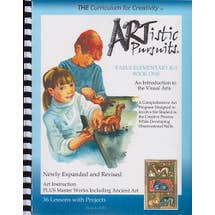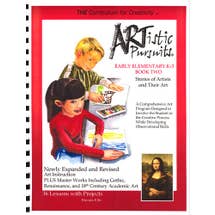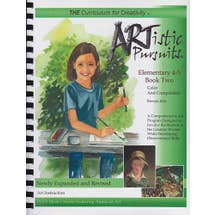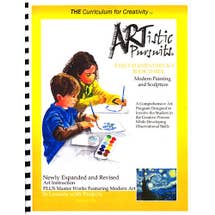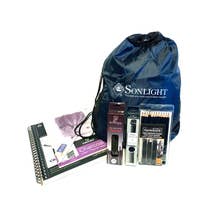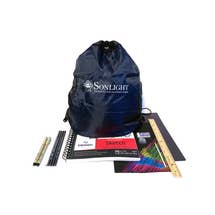ARTistic Pursuits: Homeschool Art Program
One of the joys of homeschooling is that you get to be part of your children's creative process. You can do that with ARTistic Pursuits! ARTistic Pursuits is an excellent art program, designed by a homeschooler, for homeschoolers. Author and artist Brenda Ellis wanted to allow homeschoolers the opportunity of a creative environment – even if none of the family has gone to art school.
And so Ellis created an art instruction program that starts in early elementary school and goes through high school, offering a constant expansion of artistic knowledge and skill.
The ARTistic Pursuits program is extremely well-thought-out. It incorporates four pillars of art education:
- The Elements of Art, including line, color, shape
- Composition, including balance, emphasis, contrast
- Art History, including cultures (Greek, Egyptian), movements (Impressionism), people (Picasso)
- Media, including pencils, pen and ink, pastels, clay (You can see a more thorough list, with definitions, at the bottom of this page.)
ARTISITIC PURSUITS
Shop Programs
Sonlight offers complete ARTistic Pursuits art programs for Kindergarten through High School.
ARTISTIC PURSUITS
Shop Materials
Shop individual materials, including books and art supplies kits
ARTISTIC PURSUITS
Learn More
Get more information about ARTistic Pursuits' approach to art education.
ARTistic Pursuits Art Packages
ARTistic Pursuits Packages contain everything you need for a complete homeschool art curriculum. The ARTistic Pursuits book is filled with lessons, projects, art history, and fundamental art principles. The drawstring backpack includes the art supplies that you'll need as you work your way through the book. Everything you need to hone your student's art skills!
ARTistic Pursuits Books
ARTistic Pursuits books are filled with homeschool art projects for any age, with a series of books spanning kindergarten through high school. Learn about art techniques, mediums, composition, art history, and more while completing hands-on projects.
Art Supplies Kits for ARTistic Pursuits
These Art Supplies Kits correlate with the ARTistic Pursuits books and provide the supplies required for each level. Skip the hassle of tracking down individual materials, and get everything you need in a convenient drawstring bag.





